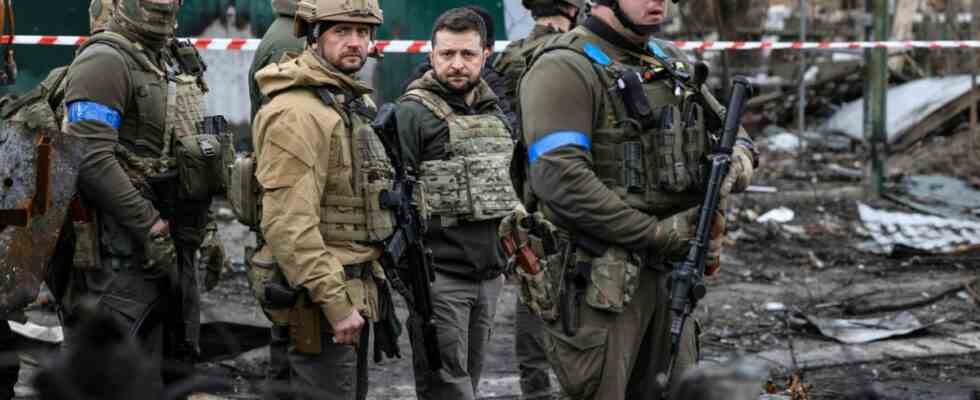There are pictures, there are videos, there are witnesses and there are documents that prove what happened in Bucha. After the withdrawal of Russian troops in the spring, the Kyiv suburb has become a kind of inhabited memorial to war crimes allegedly committed under occupation. More than 450 dead are said to have been recovered here alone, more than 400 of them with signs of torture or gunshot wounds, as after an execution. Some have also been killed.
The horrified faces of politicians who have since visited Bucha – including Ukrainian President Volodymyr Zelensky, Foreign Minister Annalena Baerbock and UN Secretary-General António Guterres – are well documented. Faced with accusations that his troops were committing war crimes, Russian President Vladimir Putin spoke only of a “provocation” and claimed that Russian soldiers had nothing to do with the Bucha crimes.
A detailed research of New York Times (NYT) has now evaluated a variety of sources in Bucha and concludes that Russian troops were involved in the crimes, namely the 234th Parachute Regiment of the Russian Army. The vehicles used in Bucha could be assigned to the regiment, although some Russian troops tried to make their insignia unrecognizable. The American journalists even want the names of individual soldiers and commanders who can be seen on videos from Bucha to be identified.
Telltale cellular data
Among other things, calls were traced back to Russia from cell phones of people who had been murdered, sometimes only hours after their presumed death. To do this, the journalists use data made available to them by the Ukrainian authorities. Individual cell phones were probably passed around among the Russian occupiers and used for several calls. The use of smartphones is subject to very strict rules in the Russian army, which is probably why many soldiers did not have their own devices with them in Ukraine.
NYT journalists have also documented several killings and possible executions of civilians using drone footage from the Ukrainian army, photographs, testimonies and videos taken by Buchan residents during the occupation, and surveillance cameras. In some cases, such as a reported shooting of several members of the Ukrainian regional defense who had surrendered to Russian troops, several videos and photos show how the men are first taken away and later their bodies can be seen behind a house.
These recordings do not provide clear evidence, but many indications that point to war crimes by the Russian army in Bucha. According to the NYT research, intercepted conversations should also prove that the crimes were committed systematically and ordered by commanders. There was no serious doubt that Russian troops committed war crimes in Bucha. The United Nations had already documented in the summer that civilians had been murdered by Russian soldiers in the suburb.
It is quite possible that the findings of this new research will make an important contribution to the current international investigations into possible war crimes in the war in Ukraine – especially because the journalists have succeeded in assigning the murders to a regiment and to individual soldiers identify. However, it can also be assumed that the Bucha crimes documented so far are only a fraction of the atrocities committed by Russian troops in Ukraine.
Same day as the NYT published the AP news agency an analysis of drone and satellite images of the port city of Mariupol, occupied by Russia in May after weeks of siege and bloody street fighting. The Russian army had previously destroyed large parts of the city with airstrikes and artillery. To this day it is unclear how many people were killed in Mariupol. Figures of up to 100,000 are circulating, but these are probably too high, even if you add up the soldiers killed on both sides and the civilian casualties.
At the time, Ukrainian authorities estimated that 20,000 residents had been killed. AP’s analysis now shows that an estimated 10,000 more graves had been dug by December. These numbers may give an indication of the siege casualties, who are believed to be still being recovered from the ruins of the city. According to reports The Russian occupiers are demolishing large parts of the city – including the remains of the theater where hundreds of civilians are said to have been hiding from Russian attacks when it was destroyed by a Russian aerial bomb in March.

